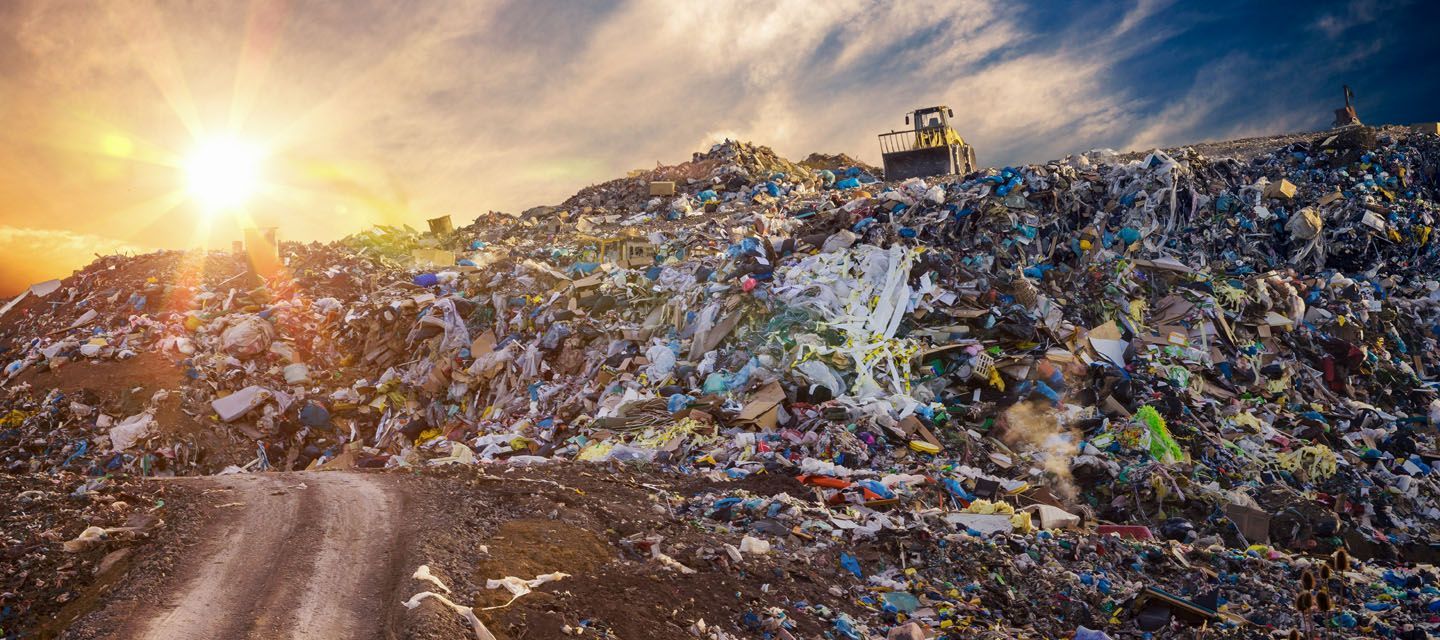The Silent Threat: Who's At Risk of Asbestos Exposure?
How many people are at risk of exposure on a daily basis?

In the annals of construction and industrial history, asbestos stands out as a material that went from being highly sought-after to widely condemned. This naturally occurring fibrous substance was once a hallmark of modern construction and industry, admired for its superior heat-resistant properties, flexibility, and affordability. However, the very properties that made asbestos a marvel also concealed a deadly secret.
In this article, we dive into understanding the insidious threat of asbestos and shed light on the groups most vulnerable to its exposure in the UK. With insights from Consulo Compliance, experts in the field of asbestos identification and management, we aim to raise awareness and underscore the importance of vigilance and proactive measures.
The following list of professions that are at increased risk of exposure during their daily work activities includes:
- Construction Workers: Those involved in constructing, renovating, or demolishing older structures.
- Maintenance and Repair Workers
- Electricians
- Plumbers
- Heating and ventilation engineers
- Cable installers
- Cleaners
- Shipyard Workers: Involved in shipbuilding, repair, and dismantling.
- Factory Workers
- Firefighters: Encountering asbestos when dealing with fires in older structures.
- Teachers and School Staff: Working in older school buildings that may contain asbestos.
- Automotive Mechanics: Especially those dealing with older cars where parts like brake linings, clutch pads, and certain gaskets may contain asbestos.
- Railway Workers: Particularly those working on older trains or in old railway buildings.
- Demolition Workers: Involved in tearing down buildings that contain asbestos materials.
- Roofers: Working on roofs made with asbestos-containing materials.
- Insulation Workers: Handling or encountering older insulation products containing asbestos.
- Carpenters and Joiners: Working in older buildings where asbestos was used in construction.
- Boiler and Furnace Workers: Engaging with older heating systems that might have asbestos insulation.
- Drywall Installers: Dealing with old drywall or wall panels containing asbestos.
- Tile Installers: Removing or installing old tiles made with asbestos.
- Masons and Stoneworkers: Encountering older cement products mixed with asbestos.
- Flooring Installers: Working with or near older vinyl or linoleum flooring products that contain asbestos.
- Painters & Decorators: Working in older buildings where asbestos might be present in textured paints or coatings.
- Refuse workers: Especially those involved in clearing fly tipped waste.
This list is by no means exhaustive but gives a good overview of just how many people are at risk of exposure on a daily basis.
The Historical Context of Asbestos
The popularity of asbestos surged in the 20th century, finding its way into various applications ranging from insulation in homes and factories to fireproof clothing for firefighters. Its versatility seemed unmatched. But as the decades rolled on, a more sinister side of asbestos emerged, linking it to devastating respiratory diseases and cancers, including mesothelioma. By the late 1990s, the UK government acknowledged these grave dangers, instituting a comprehensive ban. Despite this, the legacy of its widespread use lingers, with many infrastructures still harbouring asbestos unbeknownst to the present occupants or users.
Construction Workers: Building With a Hidden Danger
Before the significant health risks of asbestos became public knowledge, this material was extensively used in construction. As a result, workers involved in constructing, renovating, or demolishing older structures are potentially walking into asbestos minefields. Hidden within walls, ceilings, tiles, and insulation, asbestos lurks, waiting to be disturbed and released into the air. It's not merely about direct exposure; even a small disturbance can release asbestos fibres, which, when inhaled, can settle in the lungs. With consistent exposure, the risks multiply. Consulo Compliance consistently emphasises the need for construction professionals to undergo comprehensive asbestos awareness training. This equips them with the knowledge to identify potential asbestos-containing materials (ACMs) and take protective measures.
Maintenance and Repair Workers: Unseen Risks Behind the Walls
The task of maintenance or repair in older buildings is fraught with challenges, with asbestos exposure being a primary concern. Electricians, plumbers, and heating specialists, among others, might inadvertently drill into or cut through ACMs. Given the concealed nature of their work, often behind walls or above ceilings, the risk of unknowingly encountering asbestos is high. Regular training sessions and frequent reminders can be pivotal in ensuring that these professionals are always on the lookout.
Industrial Legacy: Shipyard and Factory Workers
The UK's proud shipbuilding heritage, unfortunately, also means that many shipyard workers of the past were heavily exposed to asbestos. Its remarkable insulating properties made it a popular choice for insulating ships, placing workers in direct contact daily. Similarly, factories that produced asbestos products or utilized it as a component, exposed countless workers to this hazard. Even though the direct use of asbestos in these industries has ceased, many older ships and factory infrastructures still contain it, posing threats during repairs or dismantling.
The Frontline Warriors: Firefighters
Firefighters, the brave souls who rush into danger, face a myriad of risks, with asbestos exposure being a significant one that is all too
often overlooked. When older buildings containing asbestos catch fire, the intense heat can release a massive quantity of fibres into the air. This poses a dual risk: the immediate threat of inhalation and the potential contamination of gear and equipment. It is essential for fire stations to be aware of buildings in their coverage area that might contain asbestos. Having this knowledge, provided by experts like Consulo Compliance, can prepare them for the threats they might face.
Educators and Pupils: A Lesson in Safety
It’s unsettling to think that places of learning might house such silent threats. Many school buildings, constructed decades ago, potentially contain asbestos in various parts. It's not just about immediate exposure; schools undergo frequent maintenance and repair work, during which ACMs can be disturbed. Hence, it’s crucial for educational authorities to invest in regular asbestos checks, ensuring the ongoing safety of both educators and students.
The Automotive Hazard: Mechanics and Asbestos
The automotive industry, especially in the past, incorporated asbestos in various car parts, given its heat-resistance. Older vehicles' brake linings, clutch pads, and certain gaskets often contained asbestos. When mechanics work on these parts, especially during repairs that involve sanding
or cutting, asbestos fibres can be released. For those who specialize in vintage cars, awareness of these risks is even more critical.
The Everyday Household: Residents at Risk
Many individuals might be living with asbestos right under their noses. Older homes, charming and full of character, might also be repositories of ACMs. Flooring, insulation, roofing, and even some old paints might contain asbestos. The thought of family members, especially children, being exposed is harrowing. Proactive homeowners can take steps to ensure their safety, starting with an asbestos assessment by renowned experts like Consulo Compliance.
Railway and Transport Industry: Tracks Laden with Asbestos
The railways, an intrinsic part of the UK's industrial heritage, have not been immune to the use of asbestos. Historically, train carriages, particularly the brakes and heating systems, were often lined with asbestos due to its resistance to heat and fire. Workers responsible for repairing, maintaining, or decommissioning older trains might inadvertently come in contact with this material. Moreover, stations and other ancillary buildings constructed during the peak of asbestos use might contain it in their infrastructure.
The Call to Property Developers and Landlords
With the booming property market and the trend of refurbishing older properties, developers and landlords play a crucial role in this narrative. In their quest to modernize or restore older buildings, there's a significant risk of disturbing latent asbestos, endangering not just the construction crews but future occupants. Consulo Compliance highlights the importance of comprehensive asbestos surveys before embarking on any renovation projects.
The Legacy and Implications for Public Health
The latency period for asbestos-related diseases can be extensive, often spanning decades. This means that many individuals exposed in the 70s or 80s might only now be manifesting symptoms. As a result, the NHS and other healthcare providers find themselves dealing with the aftermath of the
UK's industrial past. This underscores the gravity of the situation and the public health implications it holds.
The Role of Asbestos Identification & Management Experts
Organisations like Consulo Compliance play a pivotal role in navigating the complexities of asbestos management. Their expertise lies not just in identifying the presence of asbestos but in advising on safe management or removal strategies. Their contributions go a long way in mitigating risks and safeguarding public health.
Legal Implications and Asbestos Regulations
With the known health risks, there are legal implications surrounding asbestos management. Employers and property owners, for instance, have a duty of care to ensure that occupants and workers are not exposed to health risks from asbestos. Non-compliance can result in significant legal
repercussions, reinforcing the importance of adhering to guidelines and seeking expert guidance.
The Road Ahead: Emphasising Safety and Awareness
While the use of asbestos has ceased in the UK, the legacy of its past use persists. The road ahead demands collective responsibility. From industry professionals and public bodies to homeowners and educators, there's a shared duty to remain informed, vigilant, and proactive. Collaborating with
experts, investing in training, and endorsing best practices are steps in the right direction.
Conclusion: The Asbestos Conundrum – A Call to Action
The asbestos challenge is multi-faceted, touching various sectors of society. While the material's use is a thing of the past, its presence remains a pertinent concern. The emphasis is clear – it's not just about awareness but concerted action. With experts like Consulo Compliance leading the way, the goal is to transition from a legacy of risk to a future of assured safety.
Reach out to us today and ensure you, your employees, your friends and family are managing the risks effectively.









